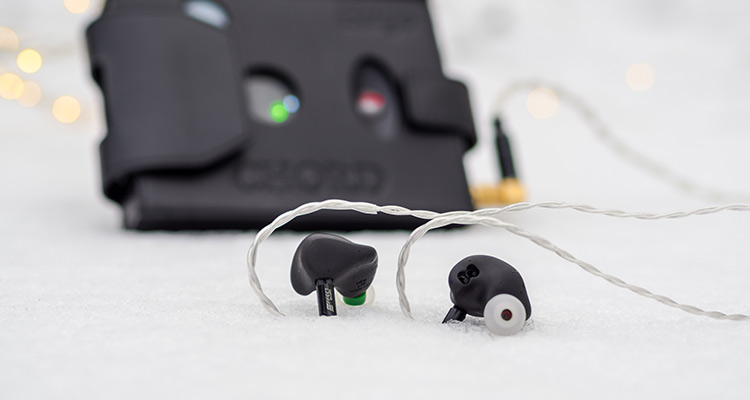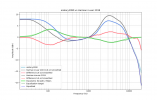One of the main objectives of In-Ear Monitor measurement (as well as other audio equipment measurements) is to understand the correlation of the perceived sound quality with the numbers and graphs. I’ve been doing IEM measurement for a while now, just as a hobby, to learn how to correlate what I hear and what is shown on the measurement results. I plan to share my IEM measurements with the community in the form of IEM reviews.
My objective in sharing measurement results is not to compare or verify the factory specifications as my measurement setup and equipment may not be good enough for it. The objective is as mentioned above to learn together with the community to get an understanding of the correlation of the perceived sound quality with the measurement result. Sharing measurement results is something that has to be done with care. There are so many things that could go wrong in measurement and sharing measurement results that were done without proper process and methodology is potentially misleading. Therefore, I try to be as transparent as possible as to how I obtain the measurement result. This post serves as a placeholder for information regarding my measurement equipment, setup, methodology, approach, and rating criteria in IEM measurement.
“Knowledge Is Not Understanding”
– Howard Pollick
• Equipment
• Calibrations
• Settings & Conditions
• Measurement
• Earfonia IEM Target Curve - EITC-2021
• Frequency Response Analysis
• Perceived Tonal Balance
• Other Sonic Qualities - Liveliness
• THD @ 94 dB SPL and 104 dB SPL
• IMD SMPTE and DIN
• Electrical Impedance
• Sensitivity
• Fit, Comfort, & Build Quality
• Metal shell to ground pin connection
• EITC-2021 and Etymotic ER4XR, ER2XR, ER2SE
------------------------------------------------------------



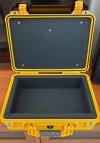
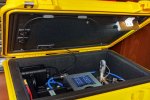
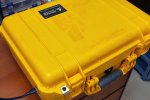
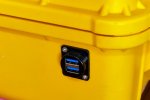
Setup:
RME Babyface Pro FS 3.5mm HP OUT (Left Ch) --> B&K 1704 IN1 > B&K 1704 OUT1 --> RME Babyface Pro FS XLR IN1
RME Babyface Pro FS 3.5mm HP OUT Analog 3(L) & 4(R) volume level: 0 dB
B&K 1704-C-102 gain: 0 dB (x1)
B&K 1704-C-102 filter: Linear
RME Babyface Pro FS XLR Input 1 gain: 6 dB
Calibrated to flat frequency response.
2. REW Microphone calibration:
IEC 60318-4 compliant coupler, E610A SN:20229
Calibrated to GRAS RA0045-S1.
3. REW SPL calibration:
ND9B SPL Calibrator set at 94 dB SPL (1 kHz)
REW SPL Meter reading calibrated to 93.6 dB SPL
Setup Dynamic Range: 135 dB SPL
Notes on SPL calibration:
Based on SPL measurement comparisons with Etymotic ER4XR, the ND9B unit that I use seems to output 94.5 dB SPL instead of exactly 94.0 dB SPL. With 0.9 dB correction factor based on measurement of the IEC 60318-4 Coupler SPL attenuation, the SPL calibration of my setup is set at: 94.5 dB SPL - 0.9 dB = 93.6 dB SPL.
4. Calibrations for Electrical Impedance measurement:
Calibrations as per REW impedance measurement recommendations:
REW Impedance Measurement
Ambient noise inside the noise isolation container: < 28 dBA SPL (measured)
Ear Tip: Stock medium size silicone ear tip is the default ear tip for measurement. If for any reason the stock ear tip is not available, other suitable silicone ear tip will be used as the replacement.
Headphone amplifier output impedance: 0.15 ohms (measured)
Audio driver and sample rate: ASIO – 96 kHz
IEC 60268-7 test level for most tests (except THD measurement @ 104 dB SPL): 94 dB SPL @ 500 Hz
Result: RAW (uncompensated)
RME Babyface Pro FS 3.5mm HP OUT Analog 3(L) & 4(R) volume level: 0 dB
(signal level set on REW generator)
B&K 1704-C-102 gain: 0 dB (x1)
B&K 1704-C-102 filter: Linear
RME Babyface Pro FS XLR Input 1 gain: 6 dB
Setting & conditions for Electrical Impedance measurement:
Test setup as per REW article for impedance measurement:
REW Impedance Measurement
Rsense: 75 ohms
Audio driver and sample rate: Java – 96 kHz
Headphone Output:
RME Babyface Pro FS 3.5mm HP OUT Analog 3(L) & 4(R) volume level: 0 dB
Signal level set on REW generator: -18.0 dBFS (approximately: 216 mV)
Soundcard Inputs:
RME Babyface Pro FS TS Input 3(L) & 4(R) gain: 9 dB (Windows driver input level set to 100%)


Measurement Frequency Range: 16 Hz - 22 kHz
Observation Frequency Range: 20 Hz - 10 kHz
Level: 94 dB SPL @ 500 Hz
Sweep Length: 1 Million Samples
Repetitions: 4x
Smoothing: 1/48th of an octave smoothing
(Data from frequency response measurement result)
FFT Length: 128k
Windows: Blackman-Harris 7
Average: 4
Max overlap: 93.75%
Frequency Range: 20 Hz - 20 kHz
Frequency Step (PPO): 6
Lock Frequency to the RTA FFT: enabled
Add Dither: enabled (24 bits)
Level: 94 and 104 dB SPL @ 500 Hz
Observation Frequency Range: 55 Hz – 7.1 kHz (THD through 6th harmonic)
Measurement Points: 43
IMD measured at 94 dB SPL @ 500 Hz
Measurement Frequency Range: 20 Hz - 20 kHz
Level: -18.0 dBFS (approximately: 0.216 Vrms)
Sweep Length: 1 Million Samples
Repetitions: 1x
Noise Filter: Medium
Observation Frequency Range: 20 Hz - 20 kHz
Resolution: 96 PPO (points per octave)
Smoothing: 1/48th of an octave smoothing
Measurement Points: 957 points
Expressions: ... dBA SPL / 50mV of Pink noise (50mV set at 500Hz)
My objective in sharing measurement results is not to compare or verify the factory specifications as my measurement setup and equipment may not be good enough for it. The objective is as mentioned above to learn together with the community to get an understanding of the correlation of the perceived sound quality with the measurement result. Sharing measurement results is something that has to be done with care. There are so many things that could go wrong in measurement and sharing measurement results that were done without proper process and methodology is potentially misleading. Therefore, I try to be as transparent as possible as to how I obtain the measurement result. This post serves as a placeholder for information regarding my measurement equipment, setup, methodology, approach, and rating criteria in IEM measurement.
“Knowledge Is Not Understanding”
– Howard Pollick
Sections:
Measurement Setup
• Software• Equipment
• Calibrations
• Settings & Conditions
• Measurement
Sound Quality
• Tonal Balance• Earfonia IEM Target Curve - EITC-2021
• Frequency Response Analysis
• Perceived Tonal Balance
• Other Sonic Qualities - Liveliness
Engineering Quality
• Left-Right Match• THD @ 94 dB SPL and 104 dB SPL
• IMD SMPTE and DIN
• Electrical Impedance
• Sensitivity
• Fit, Comfort, & Build Quality
• Metal shell to ground pin connection
Standards & References
Measurement Results (Examples)
• E610A-SN20229 and GRAS RA0045-S1• EITC-2021 and Etymotic ER4XR, ER2XR, ER2SE
------------------------------------------------------------
Measurement Setup
Software:
REW on Windows 10 PC.Equipment:
- IEC 60318-4 occluded-ear simulator - Model: E610A SN:20229, consisting of:
- IEC 60318-4 Compliant Coupler
- 1/2" Prepolarized Pressure-field Microphone
- CCLD / ICP Microphone Preamplifier
- B&K 1704-C-102 - ICP / CCLD Signal Conditioner / Amplifier
- RME Babyface Pro FS - USB Audio Interface
- ND9B SPL Calibrator
- DIY noise isolation container made from Pelican 1500 case




Calibrations:
1. REW Soundcard calibration:Setup:
RME Babyface Pro FS 3.5mm HP OUT (Left Ch) --> B&K 1704 IN1 > B&K 1704 OUT1 --> RME Babyface Pro FS XLR IN1
RME Babyface Pro FS 3.5mm HP OUT Analog 3(L) & 4(R) volume level: 0 dB
B&K 1704-C-102 gain: 0 dB (x1)
B&K 1704-C-102 filter: Linear
RME Babyface Pro FS XLR Input 1 gain: 6 dB
Calibrated to flat frequency response.
2. REW Microphone calibration:
IEC 60318-4 compliant coupler, E610A SN:20229
Calibrated to GRAS RA0045-S1.
3. REW SPL calibration:
ND9B SPL Calibrator set at 94 dB SPL (1 kHz)
REW SPL Meter reading calibrated to 93.6 dB SPL
Setup Dynamic Range: 135 dB SPL
Notes on SPL calibration:
Based on SPL measurement comparisons with Etymotic ER4XR, the ND9B unit that I use seems to output 94.5 dB SPL instead of exactly 94.0 dB SPL. With 0.9 dB correction factor based on measurement of the IEC 60318-4 Coupler SPL attenuation, the SPL calibration of my setup is set at: 94.5 dB SPL - 0.9 dB = 93.6 dB SPL.
4. Calibrations for Electrical Impedance measurement:
Calibrations as per REW impedance measurement recommendations:
REW Impedance Measurement
- Open circuit calibration, Short circuit calibration, and Reference resistor calibration (16 ohms).
- Level / Headroom calibration:
- 3 ohms load: 33.3 dB Headroom
- 600 ohms load: 6.2 dB Headroom
Settings & Conditions:
General setting & conditions for frequency response and distortion measurements:Ambient noise inside the noise isolation container: < 28 dBA SPL (measured)
Ear Tip: Stock medium size silicone ear tip is the default ear tip for measurement. If for any reason the stock ear tip is not available, other suitable silicone ear tip will be used as the replacement.
Headphone amplifier output impedance: 0.15 ohms (measured)
Audio driver and sample rate: ASIO – 96 kHz
IEC 60268-7 test level for most tests (except THD measurement @ 104 dB SPL): 94 dB SPL @ 500 Hz
Result: RAW (uncompensated)
RME Babyface Pro FS 3.5mm HP OUT Analog 3(L) & 4(R) volume level: 0 dB
(signal level set on REW generator)
B&K 1704-C-102 gain: 0 dB (x1)
B&K 1704-C-102 filter: Linear
RME Babyface Pro FS XLR Input 1 gain: 6 dB
Setting & conditions for Electrical Impedance measurement:
Test setup as per REW article for impedance measurement:
REW Impedance Measurement
Rsense: 75 ohms
Audio driver and sample rate: Java – 96 kHz
Headphone Output:
RME Babyface Pro FS 3.5mm HP OUT Analog 3(L) & 4(R) volume level: 0 dB
Signal level set on REW generator: -18.0 dBFS (approximately: 216 mV)
Soundcard Inputs:
RME Babyface Pro FS TS Input 3(L) & 4(R) gain: 9 dB (Windows driver input level set to 100%)
Measurement:
Frequency Response
Method: Continuous SweepMeasurement Frequency Range: 16 Hz - 22 kHz
Observation Frequency Range: 20 Hz - 10 kHz
Level: 94 dB SPL @ 500 Hz
Sweep Length: 1 Million Samples
Repetitions: 4x
Smoothing: 1/48th of an octave smoothing
Left-Right Match
Range: 20 Hz - 7 kHz(Data from frequency response measurement result)
Total Harmonic Distortion
Method: Stepped Frequency SweepFFT Length: 128k
Windows: Blackman-Harris 7
Average: 4
Max overlap: 93.75%
Frequency Range: 20 Hz - 20 kHz
Frequency Step (PPO): 6
Lock Frequency to the RTA FFT: enabled
Add Dither: enabled (24 bits)
Level: 94 and 104 dB SPL @ 500 Hz
Observation Frequency Range: 55 Hz – 7.1 kHz (THD through 6th harmonic)
Measurement Points: 43
Intermodulation Distortion (IMD)
SMPTE & DINIMD measured at 94 dB SPL @ 500 Hz
Electrical Impedance
Method: Continuous SweepMeasurement Frequency Range: 20 Hz - 20 kHz
Level: -18.0 dBFS (approximately: 0.216 Vrms)
Sweep Length: 1 Million Samples
Repetitions: 1x
Noise Filter: Medium
Observation Frequency Range: 20 Hz - 20 kHz
Resolution: 96 PPO (points per octave)
Smoothing: 1/48th of an octave smoothing
Measurement Points: 957 points
Sensitivity
30 seconds of Loudness Equivalent (LAeq) of 50mV full range Pink noise playback. The 50mV level is measured using 500Hz tone.Expressions: ... dBA SPL / 50mV of Pink noise (50mV set at 500Hz)
Metal shell to ground pin connection
Last edited:



